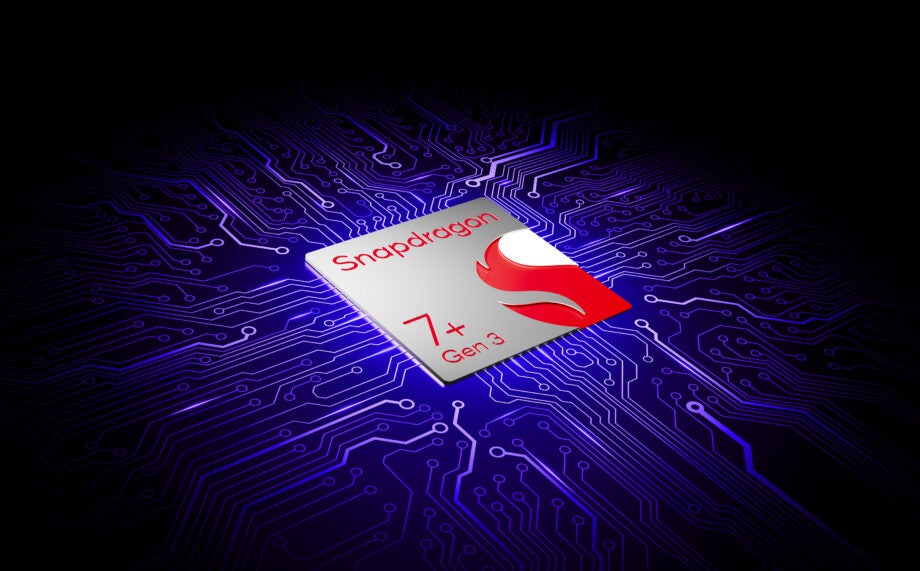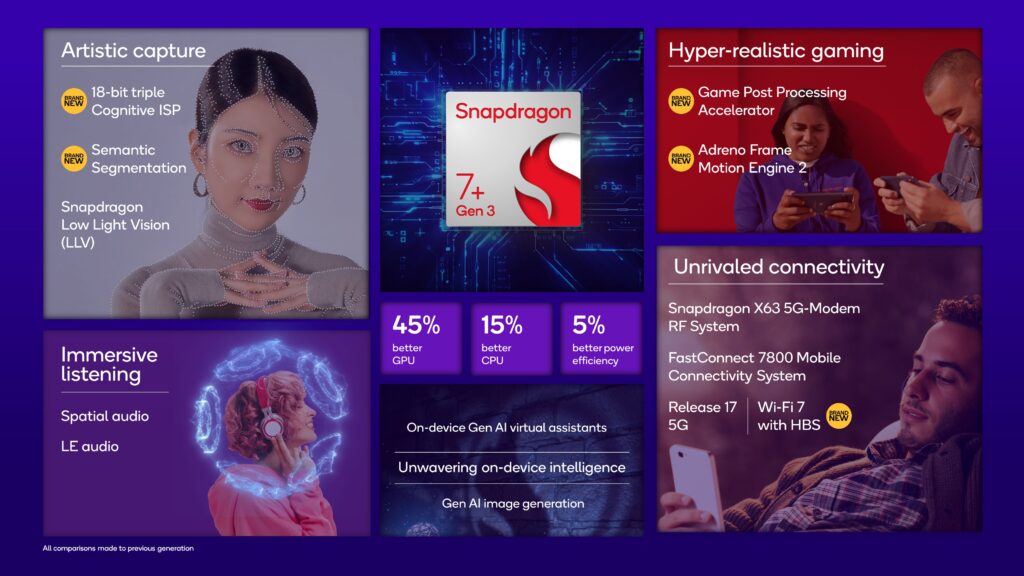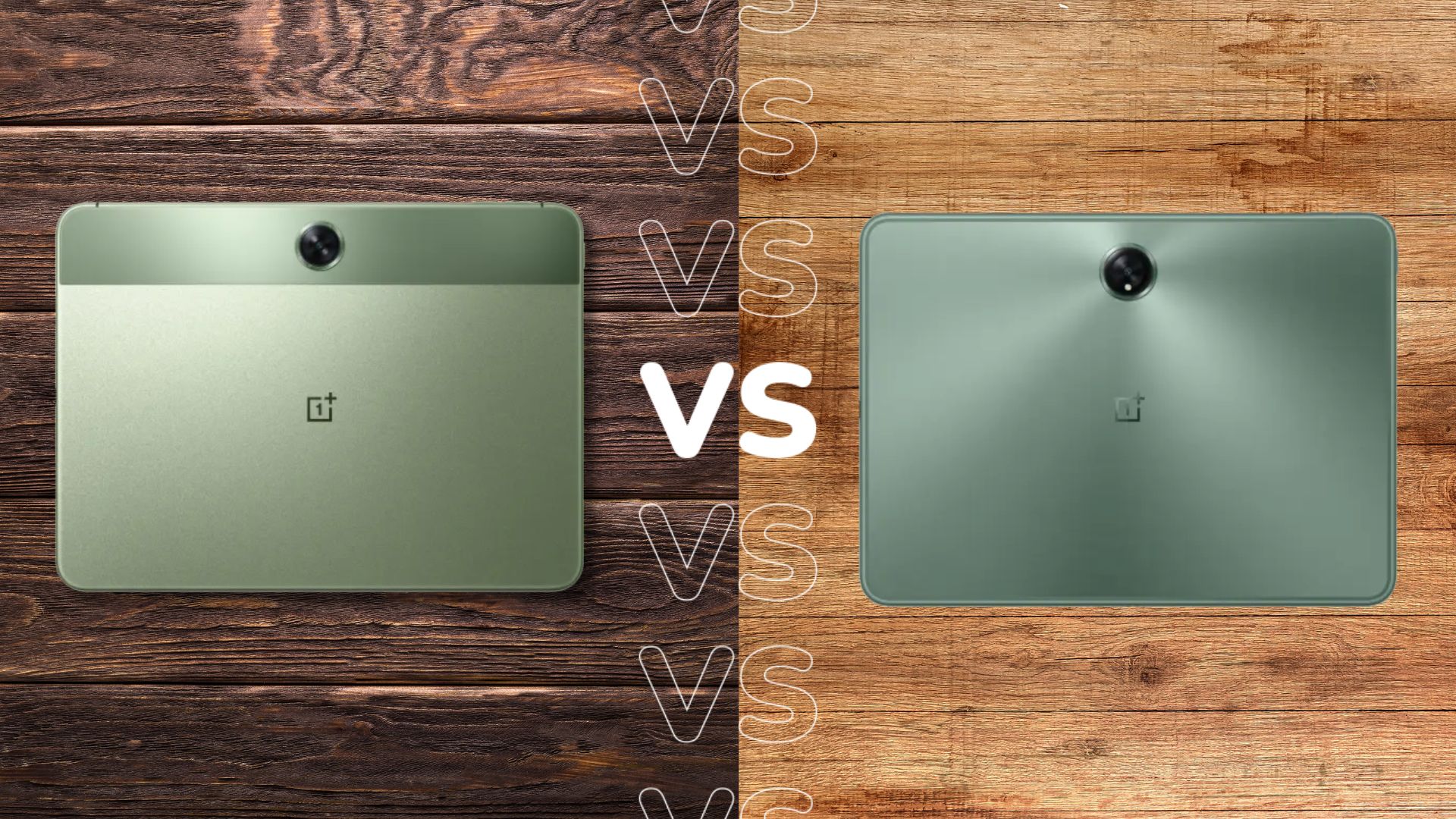Snapdragon 7+ Gen 3 vs Snapdragon 8 Gen 3: What’s the difference?

If you own an Android phone, there’s a very good chance that it’s powered by one of Qualcomm’s Snapdragon chips. Now the brand has launched two more chips to its range, including the Snapdragon 8 Gen 3 and Snapdragon 7+ Gen 3.
The chip inside your smartphone can have a big impact on your experience, not just for performance but also to determine what kind of AI features it’s capable of, as well as the quality of the camera. As a result, it’s important to pick the right chip for your requirements.
So which chip should you go for when deciding between the Snapdragon 7+ Gen 3 and Snapdragon 8 Gen 3? We’ve created this comparison guide to help you answer that very question. Here are the key differences.
Snapdragon 7+ Gen 3 is designed for mid-range phones
The Snapdragon 7+ Gen 3 and Snapdragon 8 Gen 3 chips are designed to serve different markets rather than compete against each other.
The Snapdragon 8 Gen 3 is the one most powerful mobile chip you can currently find, and so is found inside flagship phones such as the Samsung Galaxy S24 Ultra (custom version), Xiaomi 14 Ultra and OnePlus 12.
With the Snapdragon 7+ Gen 3 only just launching, we don’t know many phones that will be housing it just yet, although Qualcomm did confirm that OnePlus, Realme and Sharp are expected to adopt the chip. What we do know is that this chip will be used for mid-range handsets, and so should be more affordable than any device powered by the Snapdragon 8 Gen 3.
Snapdragon 8 Gen 3 is more powerful
The Snapdragon 8 Gen 3 is the more powerful chip of the two. We know this from digging into the CPU specs, as the Snapdragon 8 Gen 3 has 1x Prime Core (3.4GHz), 5x Performance Cores (3.2GHz) and 2x Efficiency Cores (2.3GHz).
For comparison, the Snapdragon 7+ Gen 3 instead has 1x Prime Core (2.8GHz), 4x Performance Cores (2.6Ghz) and 3x Efficiency Cores (1.9GHz). These figures show that the Snapdragon 7+ Gen 3 has one less Performance Core than the 8 Gen 3, but also has lower peak clock speeds across all of the cores.
This is all strong evidence to indicate that the Snapdragon 8 Gen 3 will be the more powerful chip. By what extent is yet to be determined, although we’ll be benchmarking the new Snapdragon 7+ Gen 3 processor as soon as we get our hands on it.

Snapdragon 8 Gen 3 supports 8K video recording
A smartphone chip impacts more than just processing power, as it also determines the maximum threshold for the camera. The Snapdragon 8 Gen 3 supports up to 8K HDR video at 30fps and 4K at 120fps, ensuring professional-grade capture quality.
As for the Snapdragon 7+ Gen 3, it’s not capable of capturing 8K video, while 4K is restricted to 60fps. This means that any phone powered by this chip won’t be able to offer a higher resolution or frame rate for video capture than what’s listed above.
What’s more, the Snapdragon 8 Gen 3 has access to a greater selection of AI-powered features to enhance video further. This includes the Night Vision video capture with RAW AI noise reduction in 4K 60fps. We’ve already seen a couple of phones take advantage of this feature, and it results in substantially superior video captured after dark.
Snapdragon 8 Gen 3 has hardware-accelerated ray tracing
Ray tracing has been the big buzzword in the gaming industry for the past few years, proving to be one of the flagship features of the PS5 and Xbox Series X. If you’re not familiar with the term, it refers to an advanced technology that allows a GPU to generate realistic and dynamic lighting effects, which can greatly enhance the visuals of a game.
Remarkably, the Snapdragon 8 Gen 3 chip supports hardware-accelerated ray tracing, so you can benefit from the technology in supported native mobile games, which includes Arena Breakout, Justice Mobile, War Thunder Edge and Diablo Immortal. Obviously these are mobile games, so don’t expect PS5 levels of graphical fidelity, but it’s nevertheless impressive that the cutting-edge technology has trickled down into smartphones.
The Snapdragon 7+ Gen 3 lacks support for hardware-accelerated ray tracing. It’s still capable of running the games listed above, but just won’t be able to generate those advanced lighting effects to give the visuals a big boost. As a result, the Snapdragon 8 Gen 3 proves to be the better chip for gaming, and so is more likely to feature inside the best gaming phones.








